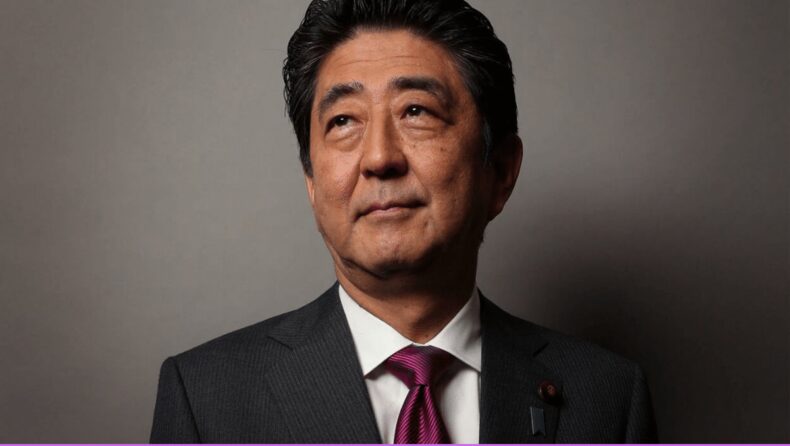As world leaders gather in Japan to pay their respect to former Japanese PM Shinzo Abe, one of the most well-known Japanese leaders the world over, Shinzo Abe is one of the most influential and also the longest-serving Prime Ministers in a country known for having a “revolving door” for the office.
Shinzo Abe’s political career stretches over four decades, shaped by his unrelenting and uncompromising determination to see Japan scale new heights, all the while dealing with political uncertainties, medical issues, policy criticism, and opposition.
Abe became Japan’s prime minister for one year from 2006 to 2007. He returned to power in 2012 and held that position until 2020 when he announced his resignation due to health issues. The tenure of Abe as prime minister transformed Japan’s political and economic journey and changed the discourse on Japan’s security strategy.
Abe had both loyal supporters and fierce opponents throughout his political career. He was seen by his supporters as a pragmatic realist and a reformist who aimed to create a powerful Japanese state capable of defending the Japanese people and culture in a volatile neighborhood and the world at large.
Abe’s opponents characterized him as a nationalist and historical revisionist who frequently flouted democratic norms and downplayed atrocities committed by imperial Japan in its colonies, particularly the Korean Peninsula and during the World Wars, in order to enhance the state’s authority.

Shinzo Abe, one of India’s closest allies, was assassinated on the 8th of July this year while campaigning for candidates for the Upper House elections, sending shock waves across Japan and the globe. During Abe’s term in office, relations between India and Japan improved significantly in terms of economic, security, and geopolitical concerns.
Tracing Shinzo Abe’s political and economic legacy
Shinzo Abe was born into a family with deep political roots. His maternal grandfather, Nobusuke Kishi, served as Prime Minister of Japan from 1957 to 1960, while his father served as Foreign Minister in the 1980s. After graduation, Abe moved to the United States to study public policy and later joined Kobe Steel Company for a short time, but soon he would enter the political arena in 1982.
During his political journey, Abe held many positions, starting with the foreign ministry and the Liberal Democratic Party (LDP). It was finally in 1993 that Abe was elected to the House of Representatives, the lower house of the National Diet.
In 2005, Abe was chosen by the Prime Minister to serve as the Chief Cabinet Secretary, and a year later, he was appointed as the Prime Minister of Japan.
Abe, during his tenure in office, introduced radical economic reforms and took Japan out of its pacifist era, re-imaging Japan’s security policy. In his first term, he implemented conservative economic reforms and took a tough stance against the rising threat from North Korea.

After being elected for a second term, Abe introduced his radical economic policies to follow a looser monetary policy and fiscal stimulus with structural economic reforms. The economic policies of Abe, dubbed “Abenomics” by experts, contained “3 Arrows” or 3 focus areas; aggressive monetary policy, fiscal consolidation, and growth strategy, to further its economic growth.
In the realm of foreign policy and strategic policy, under Abe, Japan developed deep ties with countries such as the United States and India. His most controversial stance was on the pacifist Article 9 of the Japanese constitution, which prohibits Japan from raising a standing army and outlaws war.
He viewed it as a handicap in Japan’s ability to defend itself against its adversaries, thus forcing Japan to be dependent on the United States to defend it. He not only wanted to revise this hurdle in Japan’s defense capabilities but also wanted to spend two percent of Japan’s GDP on defense.
Additionally, Abe contributed immensely to Japan’s positioning in the pacific region and on a global scale, leading to the revival of the QUAD, whose vision he had laid out in 2007 during his visit to India.
While addressing the Indian parliament, Abe said, ” The Pacific and the Indian Ocean are now bringing dynamic coupling as seas of freedom and prosperity.”
While Shinzo Abe’s efforts and close friendship with Prime Minister Narendra Modi have resulted in a close bond between India and Japan, his refusal to acknowledge Japan’s adverse role in Korea during the Second World War has earned him criticism from South Korea as well as domestically.
Takeaways from Abe’s legacy
Shinzo Abe’s legacy is far from a rosy picture. It is riddled with radical reforms and controversial stands, but there is no denying the fact that under his leadership, Japan has gained a lot economically, politically, and geopolitically as well. Before his leadership as Prime Minister, it was unimaginable to see Japan distance itself from the post-war pacifist constitution.
As the Prime Minister of Japan, Abe traveled nonstop to raise Japan’s diplomatic profile throughout the world, led geopolitical efforts, and aimed to revitalize the economy with his Abenomics policy. Thus, giving much-needed stability and security to Japan, suffering from the tsunami and nuclear disaster in Fukushima.













